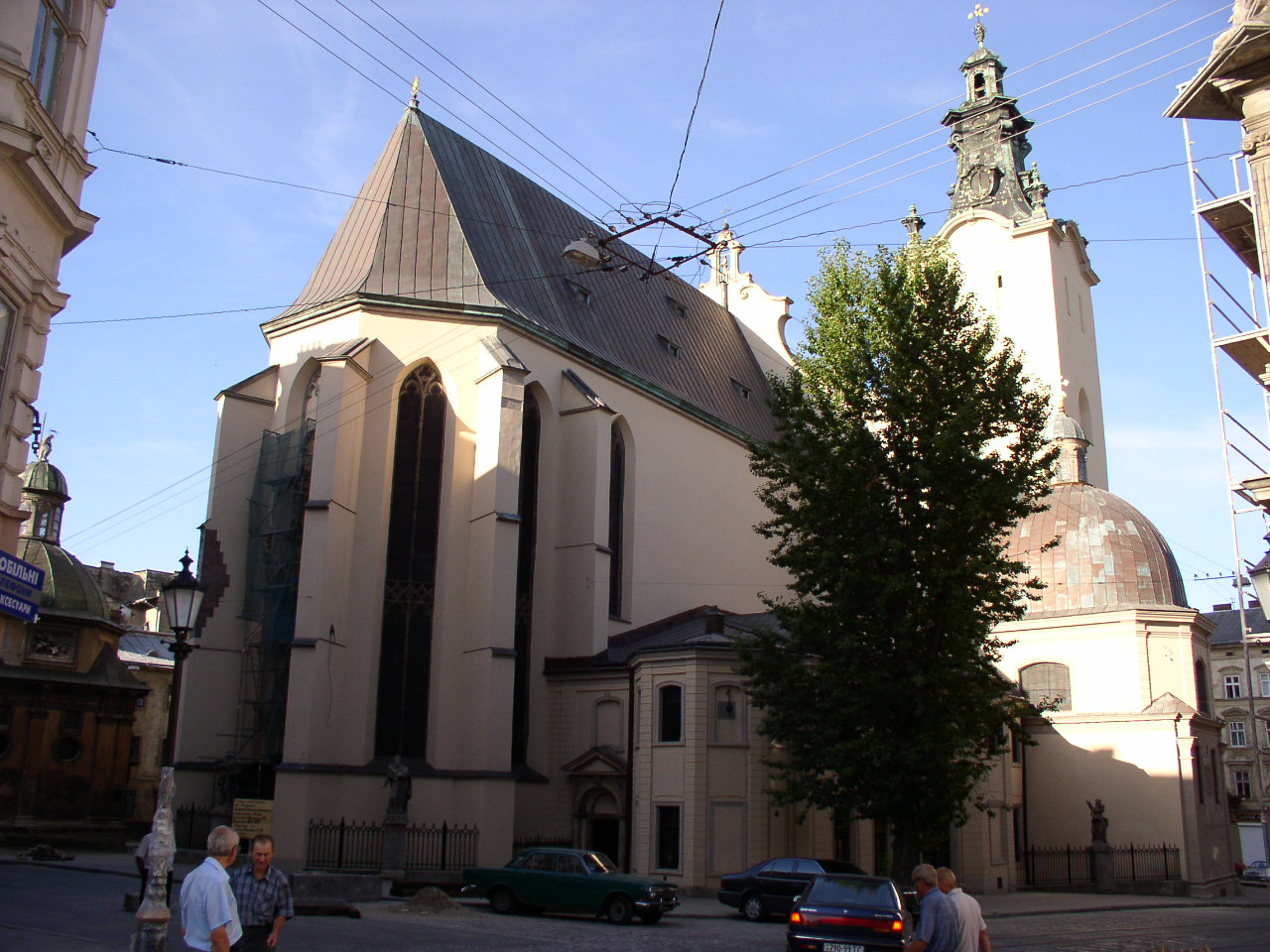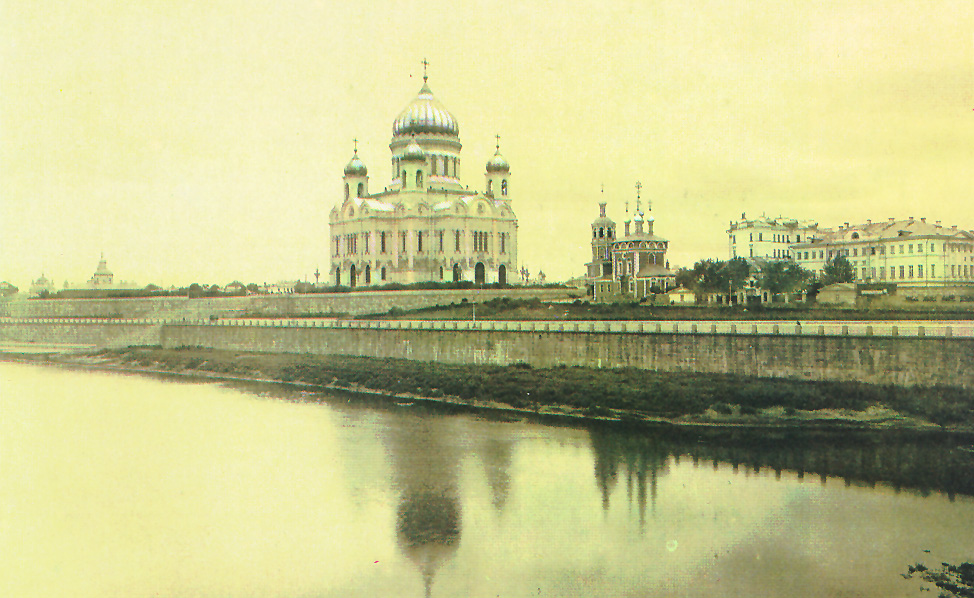|
Rafal Kiernicki
Rafal Wladyslaw Kiernicki ( uk, Рафал Владислав Керницький; pl, Rafał Władysław Kiernicki; 3 May 1912 – 23 November 1995) was a Roman Catholic prelate from Ukraine as the Titular Bishop of Dura and Auxiliary bishop of Archdiocese of Lviv since 16 January 1991 until his death on 23 November 1995. Life Kiernicki was born in the peasant Roman Catholic family of Antoni and Michaela (née Swiatłowska) Kiernicki in a present day of the territory of Kolomyia Raion of Ivano-Frankivsk Oblast, Ukraine. After graduation of the primary school in his native village (1920–1924) and the neighbouring village Hvozdets (1924–1927), he continued to study in a Franciscan gymnasium in Lviv (1927–1934). While studied in gymnasium, he joined the Order of Friars Minor Conventual in 1930; made a profession on September 4, 1931 and a solemn profession on October 4, 1934. Kiernicki subsequently made a philosophical and theological studies at the Franciscan Theological ... [...More Info...] [...Related Items...] OR: [Wikipedia] [Google] [Baidu] |
Servant Of God
"Servant of God" is a title used in the Catholic Church to indicate that an individual is on the first step toward possible canonization as a saint. Terminology The expression "servant of God" appears nine times in the Bible, the first five in the Old Testament, the last four in the New Testament, New. The Hebrew Bible refers to "Moses the servant of Elohim" (עֶֽבֶד הָאֱלֹהִ֛ים ''‘eḇeḏ-hā’ĕlōhîm''; , , , and ). , ). refers to Joshua as ''‘eḇeḏ Yahweh'' (עֶ֣בֶד יְהוָ֑ה). The New Testament also describes Moses in this way in (τοῦ δούλου τοῦ Θεοῦ, ''tou doulou tou Theou''). Paul the Apostle, Paul calls himself "a servant of God" in (δοῦλος Θεοῦ, ''doulos Theou''), while Epistle of James, James calls himself "a servant of God and the Lord Jesus Christ" (θεοῦ καὶ κυρίου Ἰησοῦ χριστοῦ δοῦλος, ''Theou kai Kyriou Iēsou Christou doulos'') in . describes "servants of God" ... [...More Info...] [...Related Items...] OR: [Wikipedia] [Google] [Baidu] |
Order Of Friars Minor Conventual
The Order of Friars Minor Conventual (OFM Conv) is a male religious fraternity in the Roman Catholic Church that is a branch of the Franciscans. The friars in OFM CONV are also known as Conventual Franciscans, or Minorites. Dating back to the 13th century, OFM Conv. has provinces worldwide. Dressed in serge habits with white cords, the friars teach in schools, serve as chaplains, run hospitals and provide aid to the poor. Background The OFM Conv. is a mendicant Catholic religious order. It is one of three separate fraternities that make up the First Order of St. Francis, for friars only. The Second Order is the Poor Clares, for nuns only. The Third Order can be for men or women, secular or religious. Source of the name There are several theories as to the source of the name "conventual": * In the Bull ''Cum tamquam veri'' of 5 April 1250, Pope Innocent IV decreed that Franciscan churches where convents existed might be called "Conventual churches". * A second theory ... [...More Info...] [...Related Items...] OR: [Wikipedia] [Google] [Baidu] |
Pope John Paul II
Pope John Paul II ( la, Ioannes Paulus II; it, Giovanni Paolo II; pl, Jan Paweł II; born Karol Józef Wojtyła ; 18 May 19202 April 2005) was the head of the Catholic Church and sovereign of the Vatican City State from 1978 until his death in April 2005, and was later canonised as Pope Saint John Paul II. He was elected pope by the second papal conclave of 1978, which was called after John Paul I, who had been elected in August to succeed Pope Paul VI, died after 33 days. Cardinal Wojtyła was elected on the third day of the conclave and adopted the name of his predecessor in tribute to him. Born in Poland, John Paul II was the first non-Italian pope since Adrian VI in the 16th century and the second-longest-serving pope after Pius IX in modern history. John Paul II attempted to improve the Catholic Church's relations with Judaism, Islam, and the Eastern Orthodox Church. He maintained the church's previous positions on such matters as abortion, artificia ... [...More Info...] [...Related Items...] OR: [Wikipedia] [Google] [Baidu] |
Religion In The Soviet Union
The Soviet Union was established by the Bolsheviks in 1922, in place of the Russian Empire. At the time of the 1917 Revolution, the Russian Orthodox Church was deeply integrated into the autocratic state, enjoying official status. This was a significant factor that contributed to the Bolshevik attitude to religion and the steps they took to control it. Thus the USSR became the first state to have as one objective of its official ideology the elimination of existing religion, and the prevention of future implanting of religious belief, with the goal of establishing state atheism (''gosateizm''). Under the doctrine of state atheism in the Soviet Union, there was a "government-sponsored program of conversion to atheism" conducted by Communists. The Communist government targeted religions based on State interests, and while most organized religions were never outlawed, religious property was confiscated, believers were harassed, and religion was ridiculed while atheism was propagate ... [...More Info...] [...Related Items...] OR: [Wikipedia] [Google] [Baidu] |
Soviet Union
The Soviet Union,. officially the Union of Soviet Socialist Republics. (USSR),. was a transcontinental country that spanned much of Eurasia from 1922 to 1991. A flagship communist state, it was nominally a federal union of fifteen national republics; in practice, both its government and its economy were highly centralized until its final years. It was a one-party state governed by the Communist Party of the Soviet Union, with the city of Moscow serving as its capital as well as that of its largest and most populous republic: the Russian SFSR. Other major cities included Leningrad (Russian SFSR), Kiev (Ukrainian SSR), Minsk ( Byelorussian SSR), Tashkent (Uzbek SSR), Alma-Ata (Kazakh SSR), and Novosibirsk (Russian SFSR). It was the largest country in the world, covering over and spanning eleven time zones. The country's roots lay in the October Revolution of 1917, when the Bolsheviks, under the leadership of Vladimir Lenin, overthrew the Russian Provisional Government ... [...More Info...] [...Related Items...] OR: [Wikipedia] [Google] [Baidu] |



